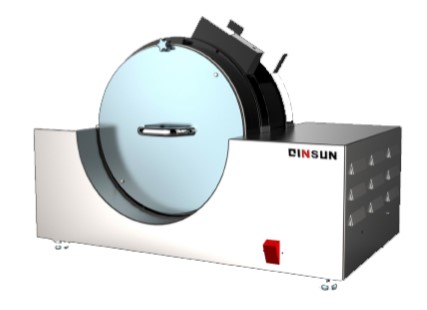
NewsInformation Center
What is a Hexapod test?
2023/09/14
A Hexapod test, also known as a hexapod motion platform or hexapod simulator, is a type of mechanical system used in the field of engineering and testing to simulate complex motions and test the performance and durability of various products, structures, or components. The term "Hexapod" refers to a six-legged robotic mechanism, inspired by the motion of insects with six legs.
The Hexapod test system consists of a hexapod platform and a control system. The platform is typically a rigid, pyramid-like structure supported by six actuators, arranged in a hexagonal pattern, which control the motion of the platform in six degrees of freedom (DOF). These DOF include translation along the X, Y, and Z axes, and rotation around the pitch, roll, and yaw axes.
The actuators used in a Hexapod test system are usually electric, hydraulic, or a combination of both. Electric actuators are commonly used for lighter loads and high-speed applications, while hydraulic actuators are preferred for heavy loads and high-force requirements.
The control system of a Hexapod test enables precise and synchronized motion control of the actuators. It allows the user to input specific motion profiles or drive signals to simulate the desired test conditions. The control system can be operated using dedicated software or programming languages that provide flexibility in creating complex motion patterns.
Hexapod tests are extensively used in various industries, including aerospace, automotive, robotics, defense, and civil engineering. Here are some applications and benefits of using Hexapod tests:
1. Vibration Testing: Hexapod tests are widely employed to subject products, devices, or structures to controlled vibration environments. By replicating the vibrations encountered during operation or transport, engineers can assess the product's structural integrity, identify potential design flaws, and evaluate the performance of various components or systems.
2. Motion Simulation: Hexapod motion platforms are used to simulate complex, multi-axis motion profiles experienced by vehicles, ships, airplanes, or satellites. This allows engineers to evaluate the response of products and systems under realistic operating conditions, such as acceleration, deceleration, pitching, rolling, and yawing.
3. Load and Force Testing: Hexapod tests enable the application of controlled forces, loads, or pressures on a test specimen. This helps in assessing the durability, strength, and fatigue resistance of products or structures by subjecting them to various load profiles. For example, in the automotive industry, Hexapod tests can be used to evaluate the performance of vehicle suspension systems or the strength of structural components.
4. Material and Component Testing: Hexapod tests are employed to evaluate the mechanical properties and behavior of materials, such as metals, composites, or polymers, under different loading conditions. This includes testing the tensile strength, compression resistance, flexural properties, and fatigue performance of materials or components.
5. Robotics and Automation: Hexapod test systems are utilized in robotics research and development to assess the performance and capabilities of robot manipulators, end-effectors, and robotic systems. The Hexapod platform can replicate real-world motion scenarios to validate robotic control algorithms, test collision avoidance strategies, or optimize trajectory planning.
6. Structural Testing: Hexapod tests are utilized to evaluate the structural integrity and reliability of buildings, bridges, or other large structures. By subjecting the structures to controlled motion or loading conditions, engineers can identify potential weaknesses, assess the effectiveness of reinforcement techniques, or validate computer simulations.
7. Human-Machine Interaction: Hexapod tests are employed in the field of ergonomic studies and human factors engineering to evaluate the effects of vibrations, accelerations, or complex motions on human operators. This includes assessing the comfort levels, stress, fatigue, or performance of individuals interacting with vehicles, aircraft, or control systems.
8. Research and Development: Hexapod tests provide a valuable tool for researchers and product developers to prototype, iterate, and refine designs in a controlled and repeatable manner. The ability to simulate complex motions and loading conditions accelerates the development process, reduces expensive physical prototyping, and guides design optimization.
In summary, a Hexapod test is a versatile and powerful tool for simulating motions, vibrations, and loads in various industries. It allows engineers and researchers to assess the performance, durability, and reliability of products, structures, or components. The ability to replicate real-world conditions and control the motion in six degrees of freedom makes Hexapod tests an essential part of the testing and development process.
Previous: What are the factors affecting the tear strength of fabric?
N e x t : Which equipment is available to test the abrasion of aggregate?




